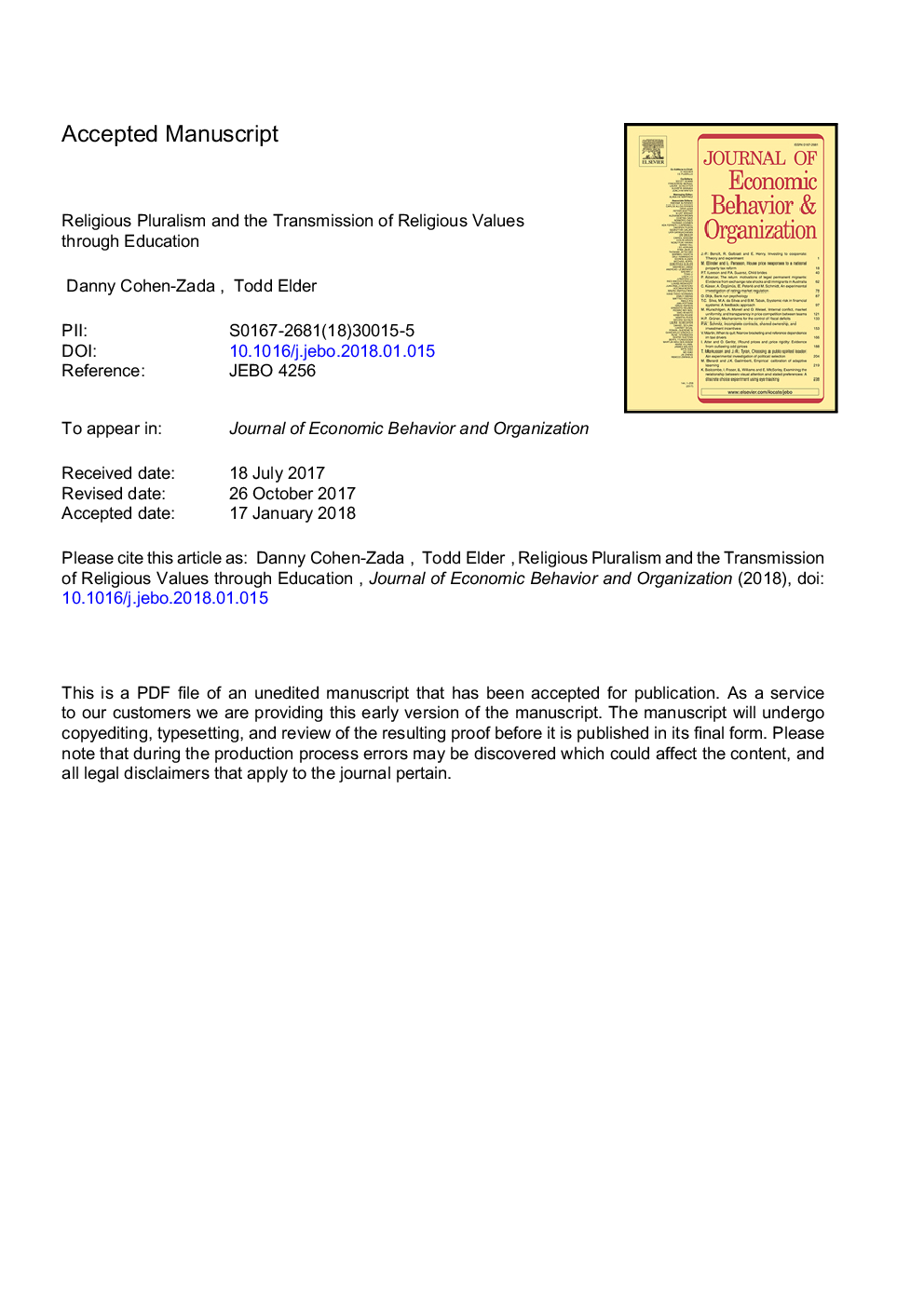| Article ID | Journal | Published Year | Pages | File Type |
|---|---|---|---|---|
| 7242542 | Journal of Economic Behavior & Organization | 2018 | 63 Pages |
Abstract
We analyze the role of formal religious education in the intergenerational transmission of religious values. We first develop a model of school choice in which the demand for religious schooling is driven partly by the desire of parents to limit their children's exposure to the influences of competing religions. The model predicts that when a religious group's share of the local population grows, the fraction of that group's members whose children attend religious schools declines. In addition, it shows that if the motivation to preserve religious identity is sufficiently strong, the fraction of all children that attend a given denomination's school is an inverse u-shaped function of the denomination's market share. Finally, the model implies that the overall demand for religious schooling is an increasing function of both the local religiosity rate and the level of religious pluralism, as measured by a Herfindahl Index. Using both U.S. county-level data and individual data from ECLS-K and NELS:88, we find evidence strongly consistent with all of the model's predictions. Our findings also illustrate that failing to control for the local religiosity rate, as is common in previous studies, may lead a researcher to erroneously conclude that religious pluralism has a negative effect on participation.
Related Topics
Social Sciences and Humanities
Economics, Econometrics and Finance
Economics and Econometrics
Authors
Danny Cohen-Zada, Todd Elder,
